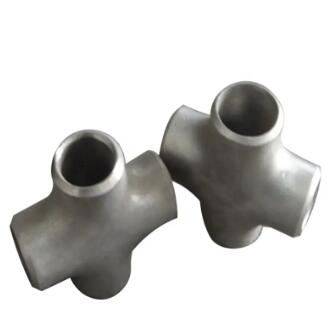Navigating Precision: Installing Stainless Steel Tee Pipe Fittings in Piping Systems with Care
2024-01-06
Introduction:
The installation of stainless steel tee pipe fittings is a critical phase in the construction of a robust piping system. Precise installation ensures the efficiency, integrity, and longevity of the entire system. In this blog post, we will explore the steps involved in installing stainless steel tee pipe fittings and discuss the precautions that should be taken to guarantee a successful and reliable installation process.
Installing Stainless Steel Tee Pipe Fittings:
1. Planning and Preparation:
- System Assessment: Before installation, conduct a comprehensive assessment of the piping system to determine the locations and orientations for the tee fittings.
- Material Inspection: Verify that the stainless steel tee fittings match the specifications and standards required for the application.
2. Cutting and Beveling:
- Precision Cuts: Ensure that pipes are cut accurately to the required lengths and angles for proper fitting.
- Beveling Edges: Bevel the pipe ends to facilitate smooth and secure welding or other connection methods.
3. Cleanliness:
- Decontamination: Thoroughly clean the pipe ends and the interior of the tee fittings to remove any contaminants, oils, or debris that could compromise the integrity of the joint.
- Solvent Cleaning: Use appropriate solvents to ensure a contaminant-free surface, promoting effective welding or other connection methods.
4. Welding:
- Welding Techniques: If using welding for installation, employ proper welding techniques, ensuring that the process is performed by certified and skilled welders.
- Welding Parameters: Adhere to recommended welding parameters and procedures specified for stainless steel to avoid compromising the material's corrosion resistance.
5. Threaded Connections:
- Thread Sealant: When using threaded connections, apply an appropriate thread sealant to prevent leaks.
- Proper Torque: Use the correct torque specifications to ensure that threaded connections are tightened securely without damaging the threads.
6. Socket-Weld Connections:
- Clean Socket Ends: Ensure the cleanliness of socket-weld ends to prevent contamination.
- Proper Fit: Ensure proper fit-up and alignment of the socket-weld tee fittings for a strong and leak-free joint.
7. Flanged Connections:
- Flange Alignment: Align flanges accurately during installation to prevent misalignment issues.
- Bolt Tightening: Follow the recommended bolt tightening sequence and torque specifications to achieve a secure and leak-resistant flanged connection.
8. Pressure Testing:
- Post-Installation Inspection: Conduct a thorough inspection of the installed tee fittings and connections.
- Pressure Testing: Perform pressure testing to ensure the integrity of the system and identify any potential leaks before the system is put into service.
Conclusion:
Installing stainless steel tee pipe fittings demands precision, care, and adherence to best practices to guarantee the reliability and longevity of the piping system. Whether using welding, threaded connections, socket-weld connections, or flanged connections, each step must be executed with attention to detail and following recommended guidelines. By taking the necessary precautions, maintaining cleanliness, and following industry standards, engineers and installers can ensure a successful installation process, ultimately contributing to the efficiency and performance of the entire piping system.



